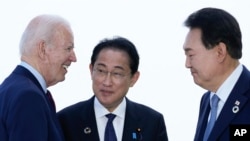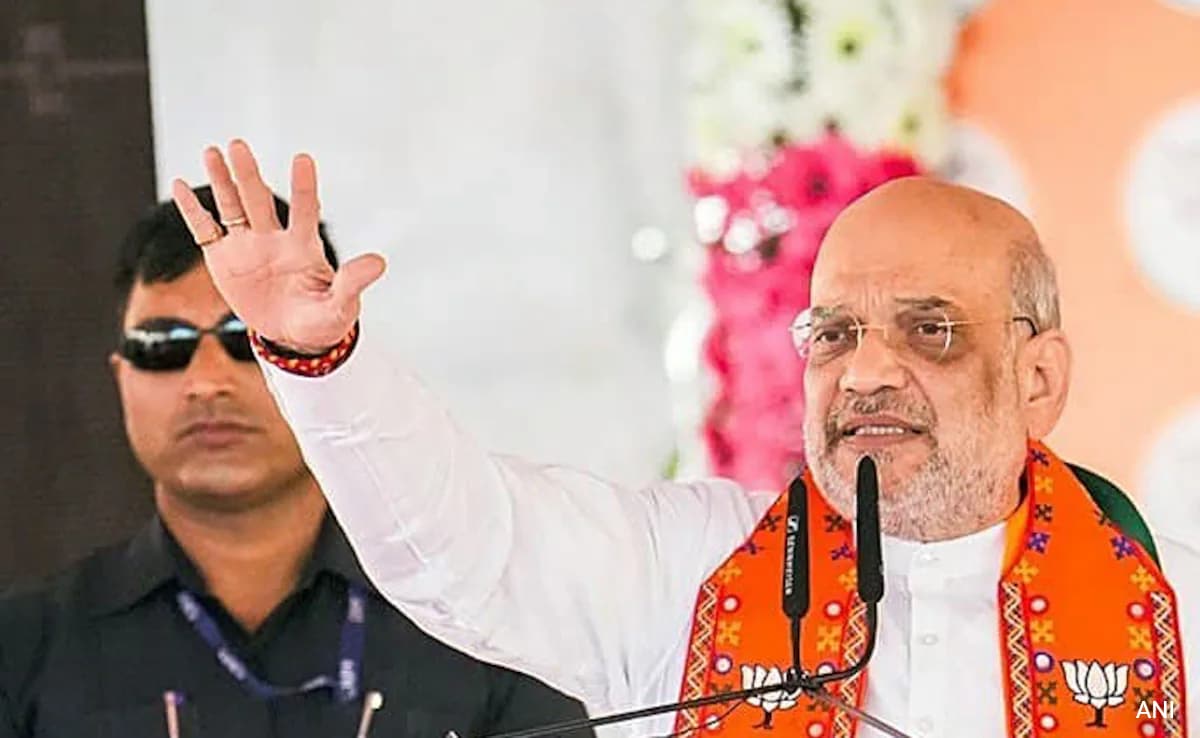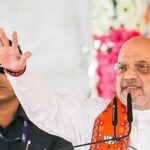For decades, U.S. Asia policy has relied on an informal “hub and spoke” system of bilateral alliances. But recently, U.S. officials have used another analogy to describe their vision for the region: a lattice fence.
It may sound like a metaphorical tweak, but officials in U.S. President Joe Biden’s administration say it could have significant consequences as they try to develop a lasting plan to counter China’s growing power.
Under the old framework, the United States, the global military superpower, served as the hub, and Asian allies such as Japan, South Korea, and the Philippines served as spokes.
The spokes are not connected to each other. But that dynamic is changing as several of America’s key allies and partners unite around what they call a “free and open Indo-Pacific.”
U.S. officials do not envision a multilateral treaty alliance like NATO. Analysts have long said such a security framework is impossible in Asia, even among U.S. allies, given conflicting interests and deep-seated historical animosities.
Instead, our goal is to help create more and more mutually reinforcing connections between like-minded countries that together form a barrier, or in other words, a lattice.
trilateral summit
This strategy was on display last week when Biden hosted Japanese Prime Minister Fumio Kishida and Philippine President Ferdinand Marcos Jr. for the two countries’ first trilateral summit.
This meeting has important symbolic significance. A joint statement expressed “serious concern” over China’s behavior in the East and South China Seas, where it has sought to push its territorial claims against Japan and the Philippines.
The United States and Japan have also pledged further assistance to the Philippines’ military modernization efforts and pledged to continue expanding joint military exercises in the region, which have increasingly involved partners in recent years.
At a separate meeting between Biden and Kishida, the United States and Japan announced dozens of bilateral agreements related to defense cooperation, including plans to allow U.S. and Japanese militaries to cooperate more closely during potential conflicts.
A U.S. administration official told reporters at a background briefing that the meetings were proof that Biden’s Asia plan was working.
“(Biden’s) theory of the case is that if the United States reinvests in its alliances and partnerships in the Indo-Pacific … those allies and partners will step up in some way and make us more capable of achieving what we target,” the U.S. official said.
The theory was best demonstrated in the U.S. alliance with Japan, where Kishida “stepped up and stepped out into the world in ways that no one could have imagined,” the official added.
Japan is a key player
As Japan relaxes its self-imposed pacifist restrictions, the country has become a major player in regional security. Japan has significantly increased defense spending, begun purchasing missiles that can strike other countries, and enacted legal reforms that will allow it to export weapons more easily.
Japan is now an active participant in many U.S.-led forums, including the Quadrilateral Security Dialogue, an informal alliance that also includes Australia and India, and the Group of Seven advanced economies that are increasingly focused on China.
Last week, the UK, US and Australia announced they were considering cooperating with Japan through the AUKUS security agreement. European military alliance NATO has also expanded cooperation with Japan, South Korea, Australia and New Zealand.
“Japan today is no longer a timid, inward-looking country relying on its pacifism and the power of the United States to defend itself,” said Daniel Russel, Asia Society vice president and former senior Asia official at the society. External Threats.” State Department.
One of the most important regional developments has been the improvement in Japan-South Korea relations, which had long been strained by issues related to Japan’s colonial occupation of Korea. Under South Korean President Yun Seok-yeol, the two countries now regularly participate in military exercises with the United States. Last year, the three countries launched a new system for sharing North Korean missile warning data in real time.
But will it work?
Few observers deny that big changes are taking place as countries respond to a more powerful China. But the strategic shift toward the United States is far from unanimous.
“Most governments in the region are taking a two-faced approach, recognizing that China is a permanent central feature of Asia’s political economy,” said Van Jackson, who teaches at Victoria University of Wellington in New Zealand.
Southeast Asians’ views of the United States have worsened over the past year, according to a survey released this month by the Singapore-based Yusof Issa Institute of Southeast Asia.
The State of Southeast Asia Survey asks the same question every year to a panel of experts and government officials.
More than half (51%) of Southeast Asian respondents said they would choose China over the United States if forced to choose. This is the first time the survey has shown a preference for China.
Surveys show that one of the main complaints is skepticism about U.S. economic participation. After then-President Donald Trump withdrew from the Trans-Pacific Partnership free trade agreement in 2017, many in Asia questioned whether the United States was as committed to free trade as before.
Biden officials have challenged that view and touted the Indo-Pacific Economic Framework (IPEF) as a counterweight to China’s economic influence. But IPEF differs from traditional free trade agreements in that it does not provide greater market access or lower tariffs—areas that are no longer considered safe in the context of U.S. domestic politics. Regardless, Trump has vowed to kill IPEF if he defeats Biden in the November presidential election.
Former New Zealand diplomat Philip Turner believes IPEF appears to have largely failed.
“Many Asian countries and regional actors such as Australia and New Zealand point out that the United States’ failure to commit economically to the region undermines its claim to regional leadership,” said Turner, who most recently served as New Zealand’s ambassador to South Korea.
Turner added that while the region is increasingly concerned about China’s rise and behavior, few Asian countries support efforts to curb China’s growth.
“They hope that the United States will put down its posture of economic coercion against China and find ways to live in harmony with each other and avoid conflicts,” he said.
Follow us on Google news ,Twitter , and Join Whatsapp Group of thelocalreport.in


















